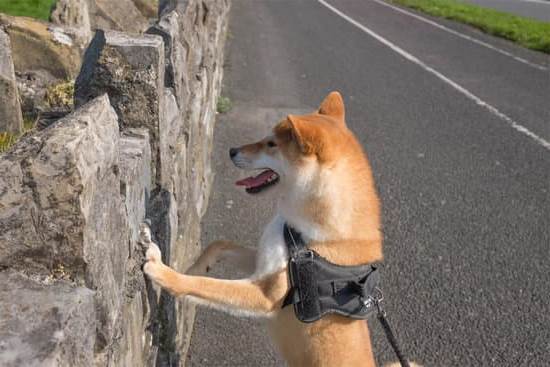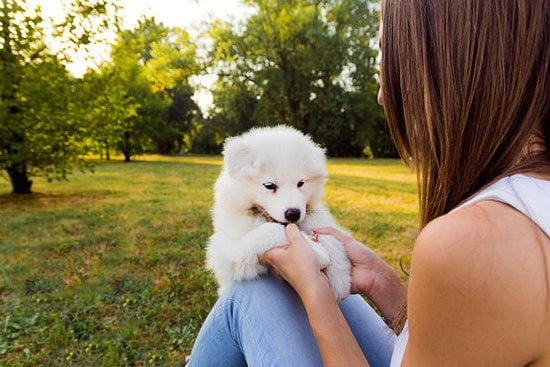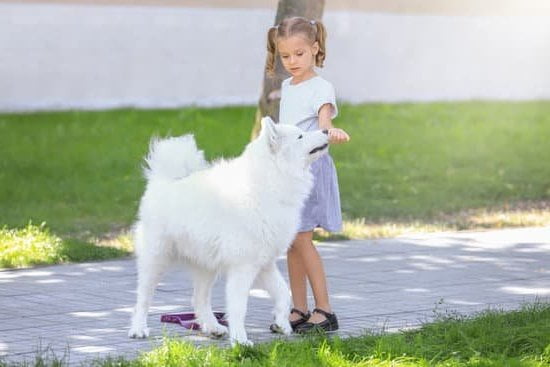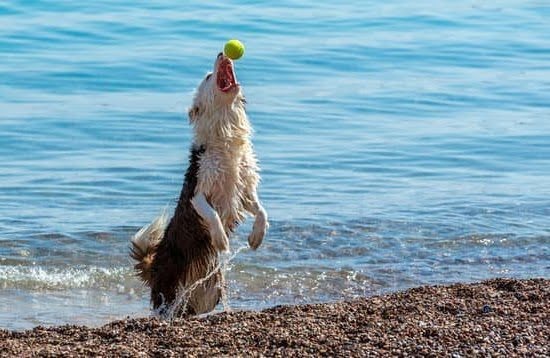Sport dog training collars have become an essential tool for working and sporting dogs, helping owners effectively train their canine companions. These collars are designed to assist in behavior training, obedience, and communication with dogs during hunting and other activities. Understanding the purpose and proper use of sport dog training collars is crucial for ensuring the safety and well-being of both the dog and handler.
When it comes to training dogs for work or sporting events, using a sport dog training collar can provide numerous benefits. From improving off-leash control to correcting undesirable behaviors such as chasing wildlife or not coming when called, these collars can be highly effective in achieving desired outcomes.
In this article, we will explore the different types of sport dog training collars available, how to choose the right one for your dog’s individual needs, best practices for utilizing them in training, and dispelling common misconceptions and myths surrounding their use.
One of the key aspects we will cover is understanding the various types of sport dog training collars, including e-collars, spray collars, and vibration collars. Each type has its own unique features and benefits, catering to different training needs and preferences.
We will also discuss important considerations when using these collars to ensure the safety and well-being of your furry companion. By gaining a deeper understanding of sport dog training collar options and techniques, you can effectively address behavioral issues while nurturing a strong bond with your working or sporting dog.
The Benefits of Using a Sport Dog Training Collar for Working and Sporting Dogs
Sporting and working dogs often require specialized training to perform at their best, and a sport dog training collar can be an invaluable tool in achieving optimal results. These collars are designed to aid in training by providing remote feedback and control, allowing handlers to communicate with their dogs effectively over long distances.
The benefits of using a sport dog training collar for working and sporting dogs are numerous, making them essential equipment for those engaged in activities such as hunting, herding, agility trials, and various other competitive events.
One of the primary advantages of using a sport dog training collar is the ability to reinforce commands from a distance. This is particularly important when working with dogs who need to cover large areas or remain focused on specific tasks while off-leash.
With the use of an e-collar, for example, handlers can deliver consistent and immediate feedback to their dogs, enhancing performance and promoting reliable off-leash obedience. In addition to remote communication, sport dog training collars also offer versatility in adjustable stimulation levels, ensuring that handlers can customize their approach according to each dog’s temperament and responsiveness.
Another significant benefit of utilizing a sport dog training collar is the improvement of safety during training and work. For example, during hunting expeditions or search-and-rescue operations, clear communication with working dogs is crucial for both their own well-being and the success of the mission. A reliable e-collar can help prevent dogs from engaging in hazardous behaviors or straying into dangerous territory by providing timely corrections when necessary.
In summary, the use of a sport dog training collar provides working and sporting dogs with crucial support for effective training, improved performance in various activities, and enhanced safety during demanding tasks. When utilized responsibly and paired with appropriate training techniques, these collars can contribute significantly to the success and well-being of active canine partners.
Different Types of Sport Dog Training Collars
Sport dog training collars come in different types, each with its own unique features and benefits. It’s important to understand the different options available before choosing the right one for your dog’s specific needs. Here are the three most common types of sport dog training collars:
1. E-Collars: Also known as electronic or shock collars, e-collars deliver a mild electric stimulation to the dog’s neck when triggered by a remote control. These collars are often used for off-leash training, behavior modification, and hunting or working dogs. It’s important to use them responsibly and under the guidance of a professional trainer to avoid causing any harm to the dog.
2. Spray Collars: These collars release a burst of citronella or unscented mist towards the dog’s nose when they bark excessively. The unpleasant sensation deters them from continuing the unwanted behavior without causing any pain or discomfort.
3. Vibration Collars: Vibration collars use gentle vibrations to get your dog’s attention or as a cue for performing certain actions. They are commonly used for deaf dogs or as an alternative training method for dogs that are sensitive to sound or physical stimulation.
When choosing a sport dog training collar, it’s important to consider your dog’s individual temperament, size, and specific training needs. Consulting with a professional trainer can also help you determine which type of collar would be most effective for your furry companion.
How to Choose the Right Sport Dog Training Collar for Your Dog’s Individual Needs
When choosing the right sport dog training collar for your dog’s individual needs, it’s essential to consider factors such as your dog’s size, temperament, and the specific behaviors you want to address. There are various types of sport dog training collars available, each with its own unique features and benefits. Understanding the differences between e-collars, spray collars, and vibration collars can help you make an informed decision.
E-collars, also known as electronic or shock collars, deliver a mild electric stimulation to your dog when used correctly. They are often used for off-leash training and can be effective for working and sporting dogs who require a high level of obedience in challenging environments. Spray collars use a burst of citronella or unscented mist to deter unwanted behavior such as barking or jumping.
This type of collar is more suitable for sensitive dogs who may not respond well to electrical stimulation. Vibration collars emit a vibration or tone that can be used as a cue for commands or as a deterrent for certain behaviors.
It is important to consult with a professional trainer or behaviorist when deciding on the right sport dog training collar for your canine companion. They can provide valuable insight into which type of collar would be most effective based on your dog’s individual needs and behavior patterns. Additionally, always ensure that any training collar is used in conjunction with positive reinforcement techniques to encourage good behavior and build a strong bond between you and your dog.
| Types of Sport Dog Training Collar | Description |
|---|---|
| E-Collar | Mild electric stimulation for off-leash training |
| Spray Collar | Burst of citronella or unscented mist to deter unwanted behavior |
| Vibration Collar | Emits vibration or tone as a cue for commands or deterrent for certain behaviors |
Training Techniques and Best Practices for Using a Sport Dog Training Collar
When it comes to using a sport dog training collar, it is important to understand the best practices and techniques to ensure the safety and effectiveness of the training process. Here are some key techniques and best practices for using a sport dog training collar:
- Proper Fit: It is essential to ensure that the sport dog training collar fits your dog properly. The collar should be snug but not too tight, allowing for enough room for movement and comfort.
- Consistency: Consistent use of the training collar is crucial for effective results. It’s important to use the collar during all training sessions to reinforce desired behaviors.
- Positive Reinforcement: While using a sport dog training collar, it’s important to combine it with positive reinforcement techniques such as verbal praise, treats, or toys. This creates a positive association with the training process.
In addition to these best practices, there are specific techniques that can be used when employing a sport dog training collar during training sessions:
- Distance Training: Sport dog training collars can be particularly useful for distance or off-leash training. The collar can provide consistent cues and corrections even from afar.
- Gradual Intensity: When introducing the sport dog training collar to your dog, it’s important to start with low levels of intensity and gradually increase as needed. This allows your dog to acclimate to the sensation without causing distress.
- Clear Communication: During training sessions, it’s important for handlers to communicate clearly with their dogs. Using consistent commands along with the appropriate signal from the training collar helps ensure understanding and compliance from your canine companion.
By following these techniques and best practices, handlers can effectively utilize sport dog training collars as part of their canine training regimen while ensuring their pets’ safety and well-being.
Common Misconceptions and Myths About Sport Dog Training Collars
Myth: Sport Dog Training Collars Are Cruel and Inhumane
One of the most common misconceptions about sport dog training collars is that they are cruel and inhumane. However, when used correctly and responsibly, these training collars can actually be an effective tool for teaching dogs boundaries and improving their behavior.
It’s important to understand that these collars are not intended to cause harm to the dog, but rather to provide a form of communication between the handler and the animal. With proper training techniques and positive reinforcement, sport dog training collars can help dogs learn desired behaviors.
Myth: Sport Dog Training Collars Are Only for Aggressive Dogs
Another myth surrounding sport dog training collars is that they are only suitable for aggressive or unruly dogs. In reality, these collars can be beneficial for a wide range of behavioral issues, including excessive barking, digging, jumping on people, and even off-leash training. Whether your dog is a working breed or simply has some behavioral challenges, a sport dog training collar can be used to address these issues effectively.
Myth: Sport Dog Training Collars Replace Positive Reinforcement Techniques
Some people believe that using a sport dog training collar means replacing positive reinforcement techniques with punishment. However, this is not the case. The best practice when using a sport dog training collar is to combine it with positive reinforcement methods such as treats, praise, and playtime.
The collar should be used as a tool for clear communication with the dog, reinforcing the desired behavior in conjunction with positive rewards. By utilizing both methods together, you can effectively train your dog while maintaining a strong bond based on trust and respect.
Safety and Considerations When Using a Sport Dog Training Collar
When using a sport dog training collar, it is crucial to prioritize your dog’s safety and well-being. These collars can be effective training tools, but it’s important to use them responsibly to avoid causing harm or distress to your pet. In this section, we will explore some safety considerations and best practices for using a sport dog training collar.
Proper Fit and Adjustment
One of the most important safety considerations when using a sport dog training collar is ensuring that it fits your dog properly. The collar should be snug but not too tight, allowing for two fingers to fit comfortably between the collar and your dog’s neck.
Additionally, it’s essential to regularly check the fit of the collar as your dog grows or gains/loses weight. Adjusting the fit of the collar ensures that it remains effective without causing any discomfort or injury to your pet.
Training With Positive Reinforcement
While sport dog training collars can help deter unwanted behaviors, it’s crucial to pair their use with positive reinforcement techniques. This means rewarding your dog for displaying desirable behaviors rather than solely relying on the corrective features of the collar. Using positive reinforcement helps create a strong bond between you and your pet while also minimizing stress or anxiety associated with the use of the training collar.
Regular Monitoring and Professional Guidance
To ensure the safe and effective use of a sport dog training collar, it is advisable to regularly monitor your dog’s behavior during training sessions. Look for signs of distress, discomfort, or any negative reactions that may indicate the need for adjustments in your training approach.
Seeking professional guidance from a certified dog trainer is also beneficial in understanding how best to use a sport dog training collar for your specific pet’s needs while prioritizing their safety and well-being.
Real-Life Success Stories
Sport dog training collars have been instrumental in transforming problem behaviors in dogs, providing real-life success stories for both pet owners and professional trainers. These collars are specifically designed to assist with correcting unwanted behaviors such as excessive barking, digging, jumping, and aggressive tendencies. By using electronic stimulation, vibration, or spray, these training collars effectively communicate with the dog and help redirect their behavior in a positive way.
One success story involves a high-energy working dog who struggled with leash pulling and destructive behavior when left alone. The owner turned to a sport dog training collar to address these issues, and after consistent training sessions and proper usage of the collar, the dog’s behavior dramatically improved.
With the guidance of a professional trainer, the owner implemented techniques that complemented the use of the sport dog training collar, leading to a more obedient and well-behaved canine companion.
In another instance, a sporting dog exhibited excessive barking during hunting trips, making it difficult for the hunter to focus on game tracking. Through the use of a specially designed sport dog training collar that utilized vibration as a correction method, the dog learned to control its barking while maintaining its alertness during hunting expeditions.
This success story highlights the practical application of different types of sport dog training collars for specific behavioral issues, demonstrating their effectiveness in real-world scenarios.
Conclusion
In conclusion, sport dog training collars have revolutionized the way we train and manage the behavior of working and sporting dogs. The use of e-collars, spray collars, and vibration collars has provided dog owners with effective tools for addressing behavioral issues and improving obedience in their canine companions. As technology continues to advance, we can expect to see further developments in sport dog training collars that prioritize safety, effectiveness, and humane training methods.
The impact of sport dog training collars on canine training and behavior management cannot be understated. These devices have allowed trainers and handlers to communicate with their dogs more effectively, leading to better control in high-stakes situations such as hunting, field trials, and search-and-rescue operations.
Additionally, the success stories shared by dog owners who have used sport dog training collars serve as a testament to the positive outcomes that can be achieved through proper use of these tools.
It is important for dog owners to educate themselves on how to choose the right sport dog training collar for their individual needs and to learn proper training techniques and best practices for using these devices. While there are common misconceptions and myths surrounding sport dog training collars, it is essential to approach their use with a commitment to safety, responsible training methods, and a deep understanding of one’s own pet.
As we look toward the future, sport dog training collars will continue to play a significant role in shaping the behavior and performance of working and sporting dogs.
Frequently Asked Questions
Is the SportDOG Collar a Shock Collar?
The SportDOG Collar is not just a shock collar; it is actually a multi-function training tool. It offers various stimulation options, including vibration and tone, in addition to static shock.
How Does Sport Dog Collar Work?
The SportDOG Collar works by allowing the user to remotely send signals to the collar, which then emits either a vibration, tone, or static shock. This helps the owner train their dog in various situations and for different behaviors.
What Is the Best Dog Collar for Obedience Training?
The best dog collar for obedience training ultimately depends on the individual dog and its specific needs. However, many trainers recommend using a flat buckle collar or a martingale collar for obedience training, as they provide gentle but effective control without causing discomfort to the dog.

Welcome to the blog! I am a professional dog trainer and have been working with dogs for many years. In this blog, I will be discussing various topics related to dog training, including tips, tricks, and advice. I hope you find this information helpful and informative. Thanks for reading!





